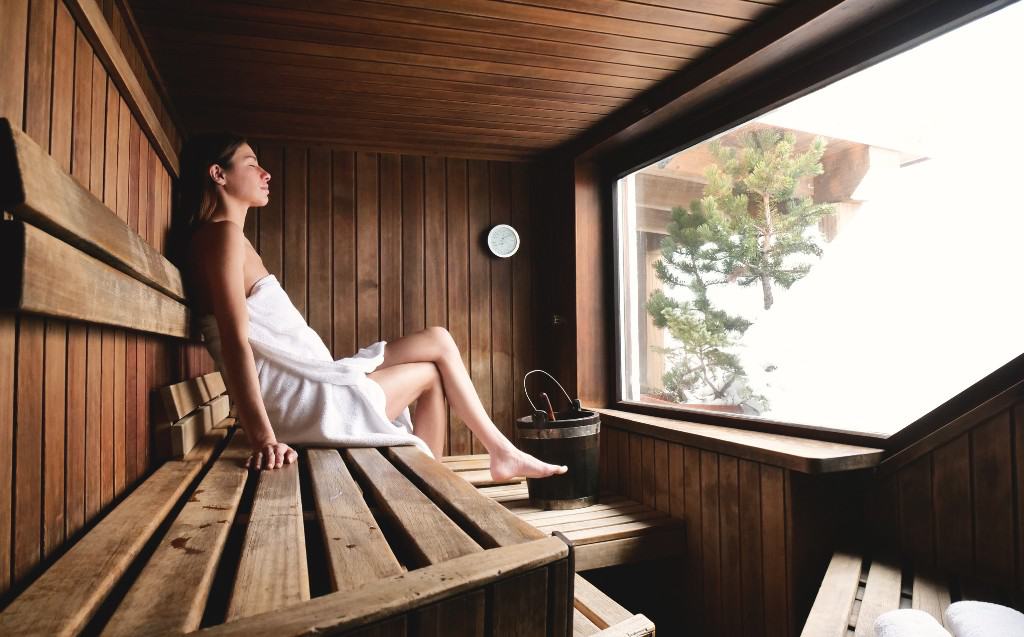
If you have a swim pond or natural pool and have long dreamed of relaxation in a sauna, you can build one right by your pond if space allows. The pond then serves as a place to cool down after a sauna session. You’ll need a sauna heater and suitable heat-resistant wood for the sauna, with good insulation to prevent heat from escaping.
Planning the Sauna Properly
A pond-side sauna is a great alternative to an indoor sauna, especially when you have limited space indoors. A large swim pond is ideal for cooling off after a sauna session. To maintain privacy around the sauna, ensure good screening to shield it from curious neighbors. Proper planning is crucial. While you can find pre-made sauna kits in hardware stores, you can also construct your sauna from scratch. Before purchasing materials and beginning construction, consider the following:
- What size should the sauna be? Select the size based on the available space by your pond and the number of people who will use the sauna.
- What type of sauna heater is needed? Electric heaters are commonly used in saunas, requiring an existing electrical connection. The heater’s size and power should correspond to the sauna’s dimensions.
- Is floor heating necessary? Some saunas don’t have a floor, which is feasible by a swim pond or natural pool. However, a sauna floor is more comfortable, and it will require floor heating.
- How much lighting do you want? Your sauna should include lighting. If you prefer natural light, opt for a sauna with a glass front or use a door with a glass insert.
- What should be the sauna’s shape? If you choose a sauna kit, there are various shapes available, such as square, rectangular, hexagonal, round, and even barrel-shaped saunas. Building a custom sauna without a kit allows you to decide the sauna’s appearance based on your space and pond’s requirements.
- Is a shower needed? If you plan to make your sauna house spacious enough, you can integrate a shower.
Safety Aspects in Sauna Construction
Adequate ventilation is essential in the sauna to maintain good air circulation. An electric sauna heater is typically the best choice, requiring a high-voltage electrical connection. Even if you do much of the construction work yourself, it’s advisable to have a professional connect the sauna heater. An electric lighting system and a shower installation will also require a professional’s expertise. The right choice of heat-resistant wood is crucial for safety as it must withstand high temperatures. Ensure the sauna’s floor is dry and waterproof. Installing an exhaust pipe at the window is important to vent out humid air and allow fresh air in, protecting the sauna building from mold. Check your local regulations before building the sauna to see if a construction permit is required, which may depend on your region and the sauna’s size.
Choosing the Right Wood for Your Sauna
You can construct your sauna from block panels to achieve a unique rustic look. Profiling wood is also suitable for cladding. When building custom sauna benches, make sure to choose the right wood for benches that can withstand not only high temperatures but also high humidity levels. The wood choice is critical for consistent heat distribution. The best woods for sauna construction are Canadian or Scandinavian hemlock spruce. Abachi wood and African poplar are also suitable.
Sauna Insulation
For your pond-side sauna, proper insulation is a must to retain heat and save energy. Without proper insulation, the sauna’s temperature will drop quickly on cold days, and you’ll need more energy to run the sauna heater. Choose the right insulation material and fill the cavities with it. A vapor barrier is also needed to prevent moisture from getting into the insulation material.
Selecting the Sauna Heater
Wood-burning sauna stoves are now less commonly installed in saunas. It’s only advisable if the electric heater’s power isn’t sufficient to reach the desired temperatures in the sauna. An electric sauna heater is a good choice, ranging from 3.3 to 12 kW in power, depending on the sauna building’s size. Lower power is acceptable if the sauna building has good insulation. An electrical control unit is required for the electric sauna heater, allowing you to set temperatures between 70 and 120 degrees Celsius. To ensure safety, install a temperature limiter. Sauna stones are required to store heat for a long time. Depending on the heater’s size, you’ll need up to 20 kilograms of sauna stones. These stones may need replacement regularly, usually every year with frequent use. Ensure good airflow around the sauna heater, especially if you plan to prepare sauna infusions.
Sauna Accessories
To create a comfortable atmosphere in your sauna, you’ll need the right accessories. You should have a hygrometer and a thermometer to monitor humidity and temperature, respectively. Headrests make for comfortable lounging, and for making infusions, you’ll need a sauna bucket and ladle.
Sauna Maintenance
Proper sauna maintenance is essential to keep your sauna in good condition. Remember to treat the wood with a suitable coating from time to time to maintain its properties. Always use a large towel as a seat cover on the sauna benches. This provides a comfortable seating surface and protects the wood. Clean the sauna only after it has completely cooled down to avoid spreading moisture. For cleaning, use a damp, not wet, cloth to prevent mold. Ventilate your sauna after each use.
Conclusion:
A sauna by a swim pond is a great way to relax. However, it requires careful planning. You can use a pre-made sauna kit or choose your materials for building a sauna from scratch. Even when doing much of the work yourself, it’s best to have a professional connect the sauna heater. The heater’s power should match the sauna building’s size. Proper insulation is crucial to maintaining heat efficiently in your sauna.